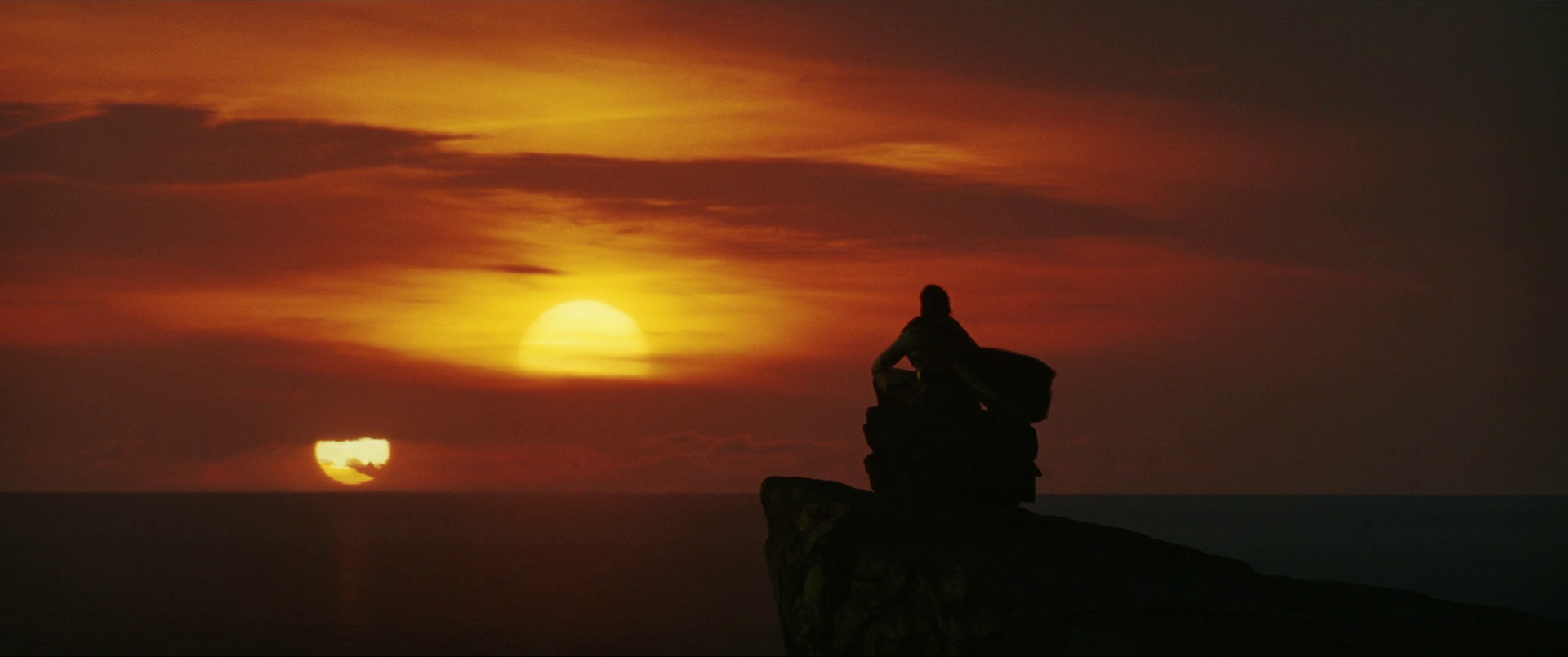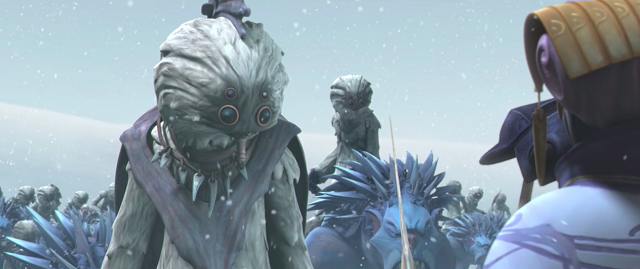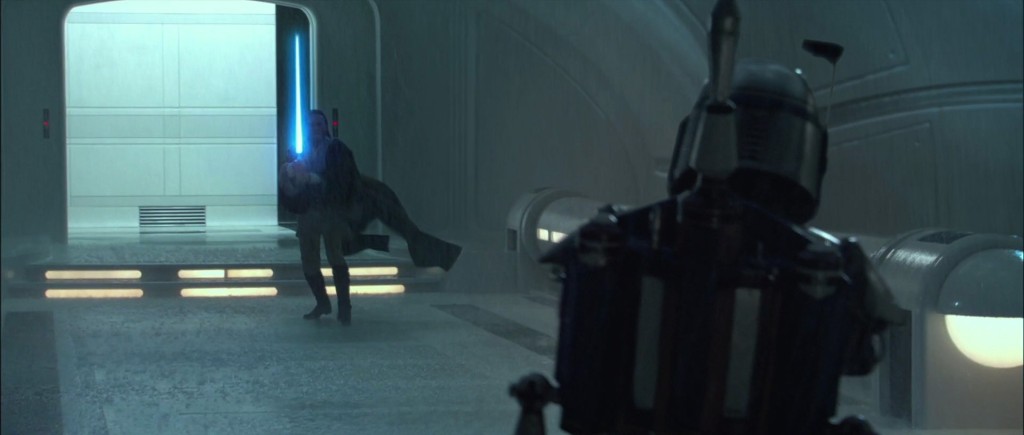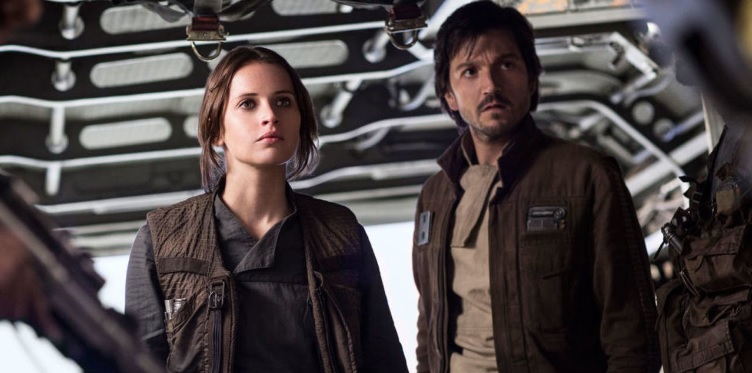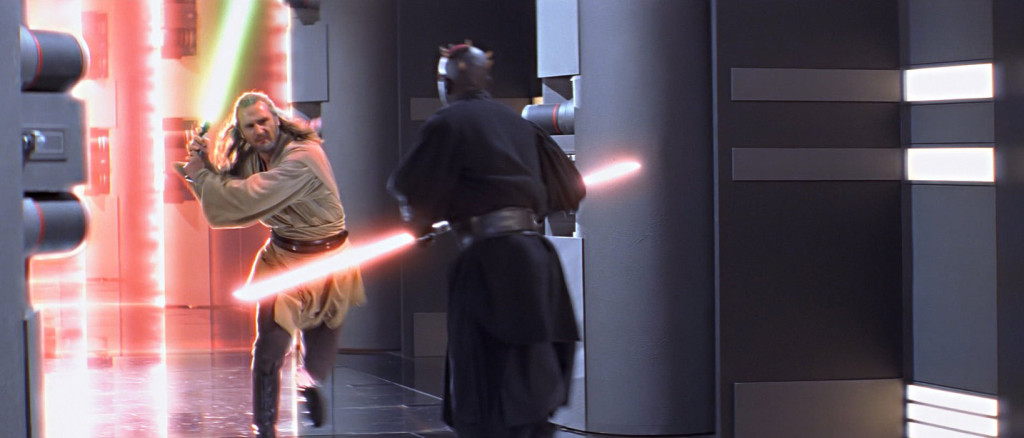There was one element of Star Wars Rebels‘ “Twin Suns” that eluded interpretation. Over the course of my multi-part close read, with every ridiculous theory I crafted for the episode’s name, I could not place it. Why were there so many shots of eyes that looked like the suns?
Maul’s eyes were the right color. Obi-Wan’s were similar to the blue of the twin moons, which served as a stand-in for the suns at night. There was a close-up of Ezra’s eye that made the pupil and the dot reflection look like the suns across the blue “sky” of his iris. Even Chopper had a moment where he was cropped by the frame so that only two of his optics were visible. “Twin Suns” did use eye close-ups and point-of-view shots to establish whose perspective the audience was to engage with, so these decisions were not wholly without reason. And yet I still could not make the connection to why these eyes resemble the suns, almost deliberately so.
